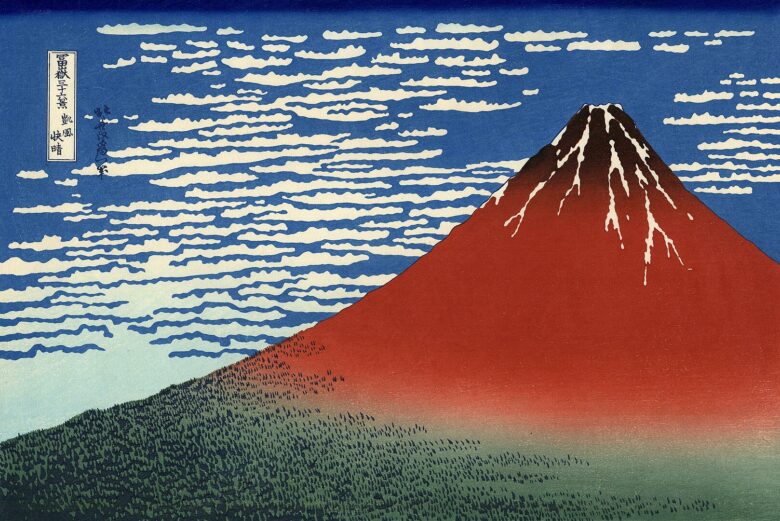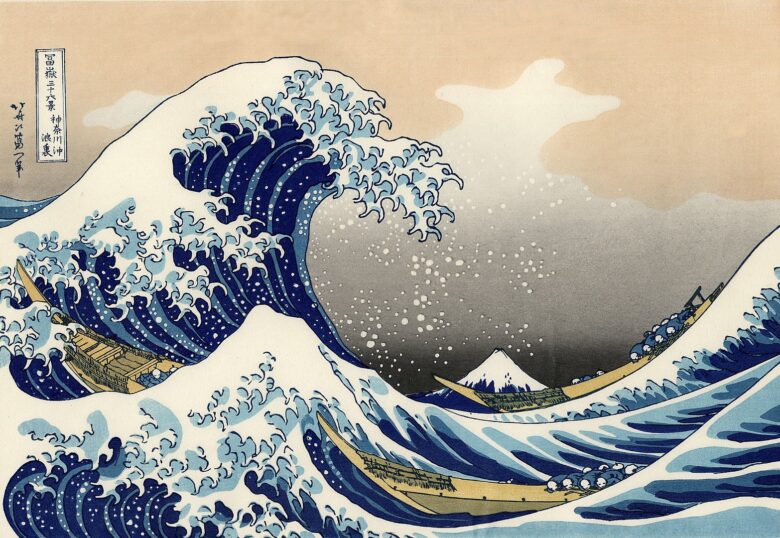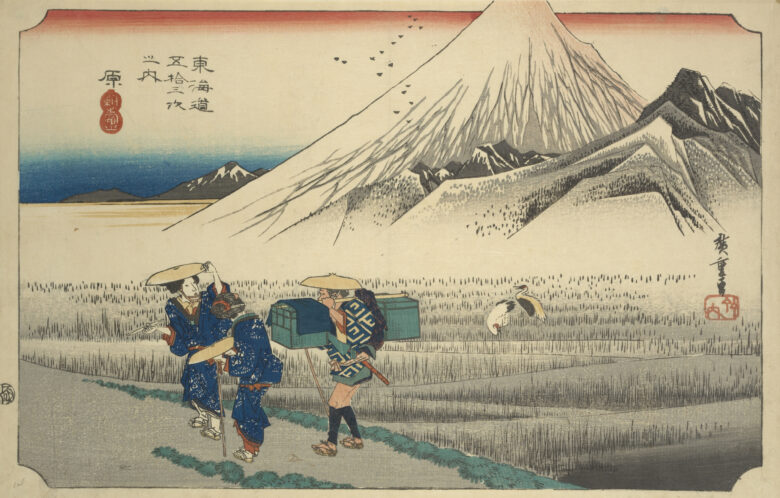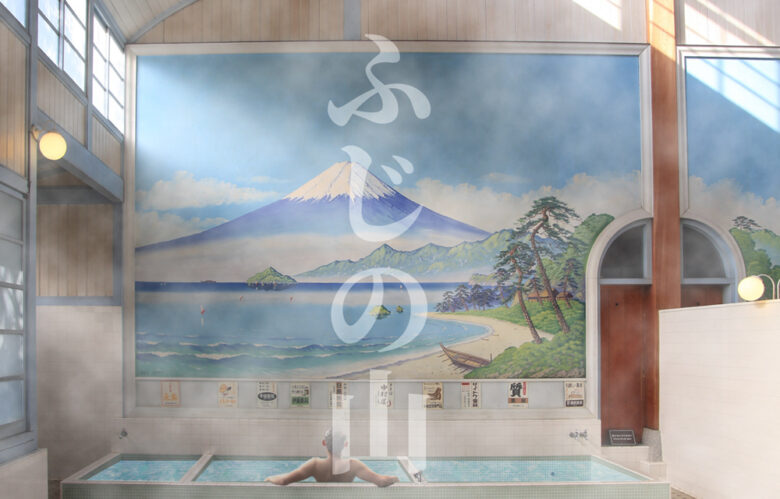Atama wo kumo no ue ni dashi
Shihou no yama wo miotoshi te
Kaminarisama wo shita ni kiku
Fuji wa Nippon ichi no yamaAozora takaku nobie tachi
Karada ni yuki no kimono kiteKasumi no suso wo tooku hiku
Fuji wa Nippon ichi no yamaLyricist:IWAYA Sazanami
Composer:Unknown
in 1910
Mount Fuji
With its head above the clouds,
Looking down on all the surrounding mountains,
Hearing the Thunder God below,
Mount Fuji is Japan’s greatest mountain.
Soaring high into the blue sky,
Dressed in a robe of snow,
With its long misty hem trailing far and wide,
Mount Fuji is Japan’s greatest mountain.

Mount Fuji, deeply loved by the Japanese people, is admired for its symmetrical beauty and sense of stability. It has been a motif in various works of art and has recently attracted many foreign tourists, contributing to its lively atmosphere.

“Akafuji” by KATSUSHIKA Hokusai

“Kanagawa oki namiurai” by KATSUSHIKA Hokusai
Recognized as a UNESCO World Heritage Site as a symbol of Japan, its history as such is surprisingly recent. It was designated as a World Heritage Site in 2013, twenty years after the first site in Japan, the “Buddhist Monuments in the Horyu-ji Area” in Nara Prefecture, which was designated in 1993.
In 1992, the “Council for Making Mount Fuji a World Heritage Site,” composed of nature conservation groups from Yamanashi and Shizuoka prefectures, was established. Despite efforts like signature campaigns, environmental degradation caused by constant trash and human waste from climbers prevented it from being nominated as a ‘World Natural Heritage’ site during domestic reviews.
Consequently, the target was shifted to ‘World Cultural Heritage,’ and in 2013, this long-held ambition was realized with Mount Fuji’s registration as a World Heritage Site.
Historically, Mount Fuji has been a focal point of faith since ancient times. From the Edo period to the early Showa era, a simple teaching that involved worshipping Mount Fuji, devoting oneself to its spirit, and expressing gratitude became widespread among common people. This faith, known as ‘Fujiko,’ is depicted in UTAGAWA Hiroshige’s “The Fifty-three Stations of the Tokaido.” Practitioners would visit Mount Fuji, worship at the main Fuji Sengen Shrine, and then perform ascetic practices like the Fujiko Hakkai Meguri.

“Toukaidou gojyu-san tsugi” Hara by UTAGAWA Hiroshige
It’s worth noting that while some cultures interpret mountain worship as primitive faith, in Japan, it is understood not merely as animism but as part of the belief in ‘Yaoyorozu no Kami’ (Eight Million Gods). In this context, I encourage foreign visitors to consider why this mountain has been worshipped by the Japanese people.
That said, regardless of the various rationales, many Japanese people rejoice and take photos when they see Mount Fuji. As IWAYA Sazanami wrote, “Fuji is Japan’s greatest mountain.”
In public bathhouses “Sentou”, which served as a place of relaxation for the common people and a place for social interaction, there were almost always various paintings of Mount Fuji. It may be difficult to find them now.




コメント